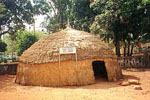
Fulani House
©1996-2002: Bernard Cloutier
|
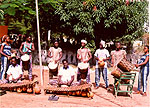
Musicians/dancers
©2002: Tourist Office
|
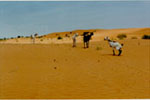
Sahel
©2002: Tourist Office
|
|
|
Burkina Faso is one of the world's poorest countries and place of the ancient Sahelian Empires and coastal kingdoms. Much of Burkina Faso is populated by descendants of the Mossi empire, founded when a band of horsemen from nearby Ghana galloped through at the turn of the 15th century. Mossi tribes people bear a scar on their right cheek with two sidelong scars across the horizontal scar.
Situated in the Sahel region south of the Sahara, Burkina Faso is 500 Km from the Atlantic Ocean. Three main great rivers run through the country: The Mouhoun in the west and the Nazinon and the Nakembe which cut across the flat relief at the centre of the country. Two important rivers cross the country, the Black Volta and the White Volta. High plains of about 300 to 400 metres comprise the major part of the territory, though a few elevations dot the country. The highest one, Mount Tenakourou in the west near the frontier of Mali, measures 749 metres, followed by the peak of Nahouri in the south. The territory is made up of a great low lying plateau, and has a mosonic climate with summer rains. In winter the prevailing north wind is turning the country more and more into desertland. There are two principal cities, Ouagadougou, and Bobo-Dioulasso. Burkina Faso means "the land (or house) of the incorruptible people".
|
|
FESPACO:
Pan African Film Festival FESPACO is held late February in odd-numbered years, is the major African film event with international attention. The next edition will be held from 22th February to 1st March 2003. Fete des Masques 7 times a year; spiritual dancing late into the night by men covered in colorful feathers and wearing wooden masks. The Moro-Naba ceremony, with traditional costumes and drums, takes place outside the Moro-Naba Palace early every morning.
International Arts and crafts fair:
The Ouagadougou international arts and crafts fair is a framework promoting the products of African handicraft. It emerged from a joint initiative of the National Board of foreign trade (ONAC) and the Chamber of Commerce, Industry and Handicraft aiming at highlighting a once abandoned sector: handicraft. This initiative is after all in keeping with the concern to reduce the growing deficit of trade balance in African countries confronted to the deterioration of the prices of some exported or exportable raw materials. The 2000 Fair (27th october to 5th november) had as theme : "African handicraft and regional integration" and was visited by 400'000 guests from 30 countries.
The fair is held every other year, late in October in even years.
|
|
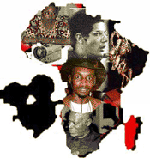
©2001: FESPACO
|
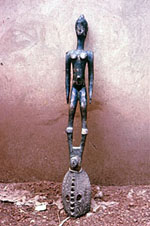
©2002: Africa Focus
|
|
Ougadougou:
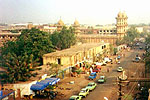
Ouagadougou
©1996-2002: Bernard Cloutier
|
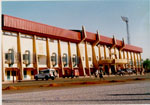
Stadium
©2002: Tourist Office
|
|
|
Ougadougou is the capital of Burkina Faso. The town is sometimes spelt Wagadugu. Founded in the 15th century, it was the capital of the Mossi kingdom of Wagadugu (in 1441). About 250 years later, it became the permanent residence of the Morho Naba (great king), the Mossi king. In fact, even today, the Morho Naba lives in the city, though with much-depleted powers. Ougadougou today has a relaxed atmosphere with wide avenues, modern public buildings and large trees. It includes buildings and institutions like the University of Ougadougou, the national museum and a crafts center. Some of the products of the country include textiles, beverages, matches, footwear. It has an international airport and is connected by road to Abidjan, Ivory Coast. At about 30 km out of town, on a rocky piece of land, you can see a permanent exposition of art. Here sculptors from around the world have carved their works of art out of the existing rocks.
|
Tourism:
Burkina Faso is called the cultural centre of the Sahel. As far as the capital Ouagadougou is concerned this is certainly true for the visual arts and film. Bobo Dioulasso, the second city of Burkina Faso is famous for its Djembé and Balafoon music. In both cities there are many nightlife events and live music performances to assist to. The country side is very diverse. In the North of the country you can visit the Sahel village of Gorom Gorom. It is situated in the dry, flat semi desert with every now and then a sand dune, a village or a nomad camp. You can hardly imagine a more shocking contrast with the green, lush landscape of Banfora, abounding with water. Not far from here you'll find the Lobi area, which is worth a visit because of its special culture and architecture. It has a beautiful wild park and an elephant reservation. In the North, around Gorom Gorom you can make trips by camel. The surroundings of Banfora is very suitable for hiking trips. You can explore the surroundings on a rented bike or motor bike. Burkina has many little storage reservoirs where fishermen often rent boats to visitors.
Manega:
About 50 kilometres from Ouagadougou you will find the special town of Manega. A lawyer/poet who was born in this town, converted it into a monument for African culture and world peace. When you approach the town you will see several boards with poems. Throughout the village statues were raised for various Mossi kings and there is a monument dedicated to all suffering children of the world. What will certainly impress you most is the museum. At other places in Western Africa, the anthropological museums are usually not more than a collection of objects. Here, however, it is obvious that someone has thought about the structure of the museum as well as the educational aspect of it. One of the most important Mossi legends is represented here by means of copper statues. The visitor must enter backwards and barefoot in the room where funeral-related objects are exposed, according to the local tradition. Outside, houses of various Burkinese people have been reproduced.
Gorom Gorom:
On the edge of the desert and the Sahel Gorom Gorom is located. The broad sandy roads and the low rise buildings give the city its special Sahel atmosphere. The traveller who visits Gorom Gorom must make sure he spends a Thursday there, when it's market day. It is one of the most colourful markets in Western Africa. From far and wide people come by car, by donkey cart or by camel to the market. Various sections of the population gather here to buy, sell or trade goods. What may be even more important is the social part of it: meeting old acquaintances and family and exchange news. One of the most interesting section of the market is the camel market. It is really worth it to sit down here for a while and watch the negotiations and the camel testing. From Gorom Gorom it is possible to make camel tours starting from a few hours up to a few days.
Bobo Dioulasso:
Bobo Dioulasso is the second city of Burkina Faso. From its relative prosperity, compared to other cities, one can tell that it is a city of traders. It's a pleasant place to be, with lots of green. The French colonial influences are still quite clearly visible, especially in the wide tree lined avenues and the new-Sudanese architecture. This style was inspired by the West African Sudanese clay construction. The station and the market are the most striking examples. The old mosque is a good example of the original Sudanese clay construction. This mosque is open to visitors. The old quarter of town is worth a visit. Here you'll find the pottery workshops, wood carvers, batik makers and makers of the Djembé and Balofoon instruments. The Djembé is an upright drum and the balofoon some sort of xylophone made out of bamboo and calabash. Bobo is famous for the quality instruments that are manufactured here as well as for the musicians playing them. There are many clubs where live African music is played. When there is no band playing, it is never difficult to find musicians who would want to give a private performance for a remuneration.
Banfora and surroundings:
Banfora is a very normal African village without any special sights. However, the surroundings are especially beautiful. There are many possibilities to make excursions by car, motor bike or by foot. Recommendable is a walk to the impressive Karfiguela waterfall via the sugar cane plantations (a few kilometers from Banfora). By car or motorbike you may want to visit the most beautiful cascades from Burkina, the "Cascade de Leraba". Another option is an excursion to the fairy tale-like Sindou rock formations, where you can make great walks. The seasoned traveller can make a hiking trip of several days here, but keeping in mind that on the way there are no facilities like hotels or restaurants. The traveller who wants to travel more comfortably can discover the surroundings by car from Banfora.
The "Pays Lobi" and Gaoua:
Like the Somba in Benin and the Tamberma in Togo, the Lobi people form the outsiders within the West African culture. It is suggested that they have common ancestors. These people don't live together in a village, but build their houses on a certain distance of each other. The area has been war-stricken during centuries, therefore the houses are built like heavy fortresses, without a single window or airing holes. Some of them don't even have a door. In this case the house is entered with ladders that can be drawn up. If an enemy succeeds to enter he will be surprised by a labyrinth of pitch dark rooms and corridors. Before his eyes can get used to the darkness he will probably be killed already by the occupants, for example with a poisoned arrow. If these occupants are not sure about the identity of the "visitor", there is always the magic warning system. A fetish on the roof of the house tracks strangers immediately and warns another fetish in the nearby sacred forest. Then the spirits in the ancestor hut is warned, who contact the prophets in heaven. These prophets finally warn the people in danger.
The best place to start exploring the Lobi area is Gaoua. Here you will find an interesting museum where many objects are being displayed: weapons, tools, carved wood, like statues and decorated chairs, bronze amulets,
Economy:
Burkina Faso is the world’s 9th largest producer of sweet potatoes, and the 11th of sorghum. France is its main trading partner.
History:
|
The historic existence of powerful kingdoms in the East, the Centre and the North mark the history of Ouagadougou, Tenkodogo, Yatenga and the Kingdom of Gourma. The western region was inhabited by non-organized societies in centralised states. These various ethnic groups managed to maintain their unity and independence, and successfully drove back Sudanese conquerors and advocates of Islam. It is only at the end of the 19th century that the territory of the Upper Volta became a disputed target of the colonial powers of France, Great Britain, and Germany. Previously known as Upper Volta, it was a French colony from 1886, and was part of a larger administration which included Northern Senegal and Niger from 1918 until it attained independence on 5th August 1960.
The Frenchman Voulet Chamoine began his conquest in 1896-97. In 1904, the country was integrated into the colony of Haut-Senegal-Niger. Fifteen years later, it withdrew from this group and became the colony of Upper Volta. In 1932, a new change occurred and Upper Volta was sliced up and placed under the administration of its neighbouring colonial territories. In 1947, Upper Volta regained its former frontiers and kept its colonial name for 37 years. On December 11th, 1958, the Republic of Upper Volta is declared and its independence asserted on August 5th, 1960. However, it was only in 1984 that the borders of the country were finally defined. In 1966 after many demonstrations over famine and poverty, the army came to power under Colonel Lamizana. In 1970 a constitution was signed, which prepared for the withdrawal of the army in 1974. But the army refused to give up power and disolved all parties.
The current President, Blaise Compaore came to power after a violent coup in 1987. In June 1991, Compaore dissolved his government and formed a transitional government leading to elections and political parties were unbanned. But the opposition parties boycotted the elections and Compaore, the only candidate, was elected President on 1 December 1991 with only 25% of registered voters casting their vote. The leading opposition figure, Clement Ouedraogo, was assassinated. In November 1998 Compaore was re-elected to power for another 7 years. Outside observers declared the election fair and transparent, but civil unrest has been growing.
|
|
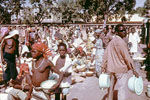
Old Market
©2002: Africa Focus
|
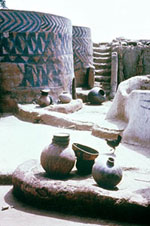
Sissala Compound
©2002: Africa Focus
|
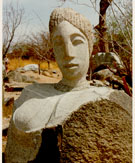
Laongo Statue
©2002: Tourist Office
|
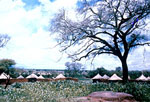
Gourcy Village
©2002: Africa Focus
|
|
Enabling us to improve the quality of the content, if you have additional information, remarks or suggestions, please share it with us by e-mail.
Last updated: 24 April 2008
|